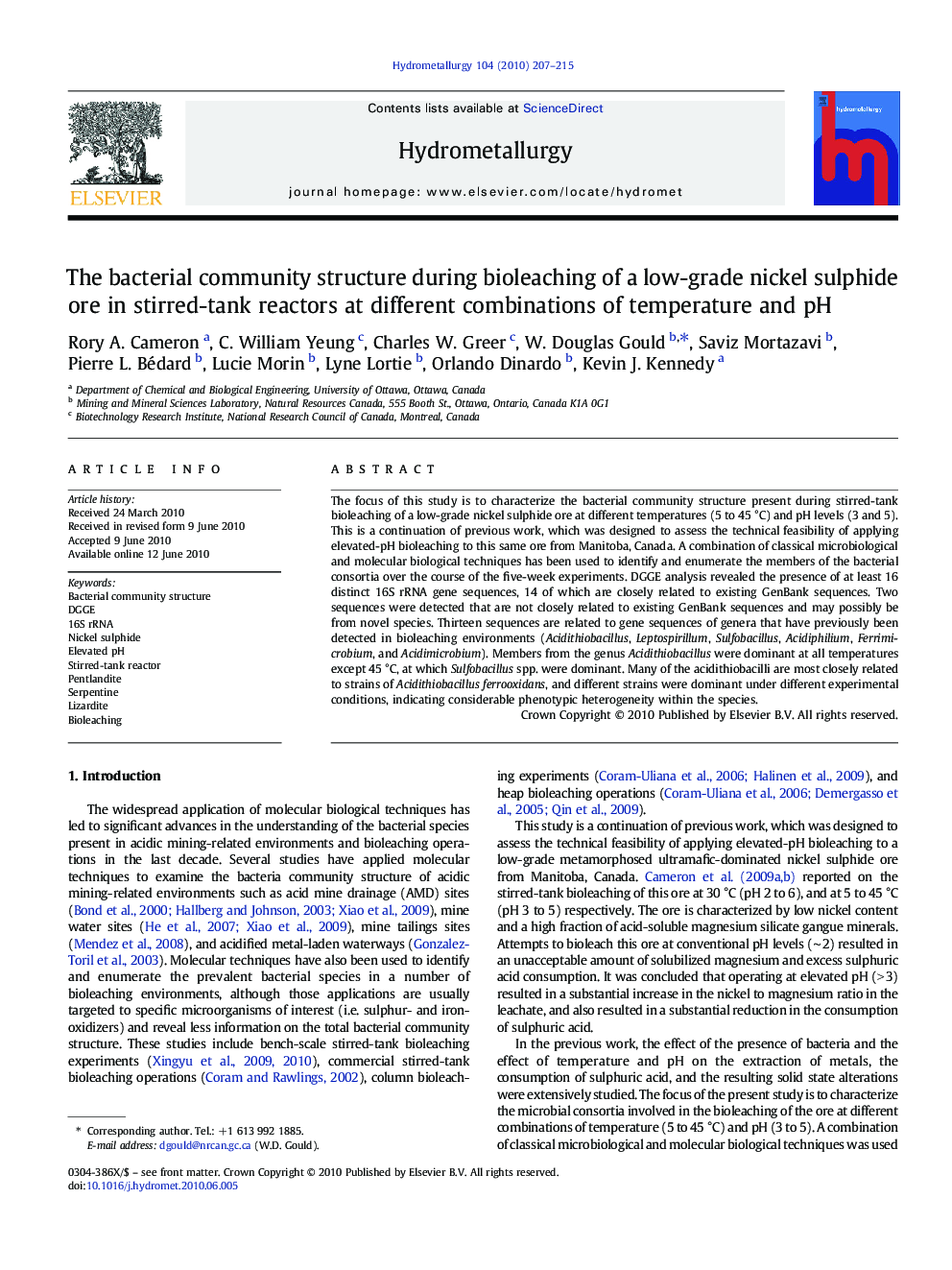| کد مقاله | کد نشریه | سال انتشار | مقاله انگلیسی | نسخه تمام متن |
|---|---|---|---|---|
| 212833 | 462069 | 2010 | 9 صفحه PDF | دانلود رایگان |

The focus of this study is to characterize the bacterial community structure present during stirred-tank bioleaching of a low-grade nickel sulphide ore at different temperatures (5 to 45 °C) and pH levels (3 and 5). This is a continuation of previous work, which was designed to assess the technical feasibility of applying elevated-pH bioleaching to this same ore from Manitoba, Canada. A combination of classical microbiological and molecular biological techniques has been used to identify and enumerate the members of the bacterial consortia over the course of the five-week experiments. DGGE analysis revealed the presence of at least 16 distinct 16S rRNA gene sequences, 14 of which are closely related to existing GenBank sequences. Two sequences were detected that are not closely related to existing GenBank sequences and may possibly be from novel species. Thirteen sequences are related to gene sequences of genera that have previously been detected in bioleaching environments (Acidithiobacillus, Leptospirillum, Sulfobacillus, Acidiphilium, Ferrimicrobium, and Acidimicrobium). Members from the genus Acidithiobacillus were dominant at all temperatures except 45 °C, at which Sulfobacillus spp. were dominant. Many of the acidithiobacilli are most closely related to strains of Acidithiobacillus ferrooxidans, and different strains were dominant under different experimental conditions, indicating considerable phenotypic heterogeneity within the species.
Research Highlights
► Bioleaching microorganisms were characterized by molecular and classical techniques.
► Sequences for most of the common bioleaching microorganisms were detected.
► Temperature had the most effect on the bacterial community structure.
► At elevated temperature (45oC) Sulfobacillus spp. dominated.
Journal: Hydrometallurgy - Volume 104, Issue 2, September 2010, Pages 207–215